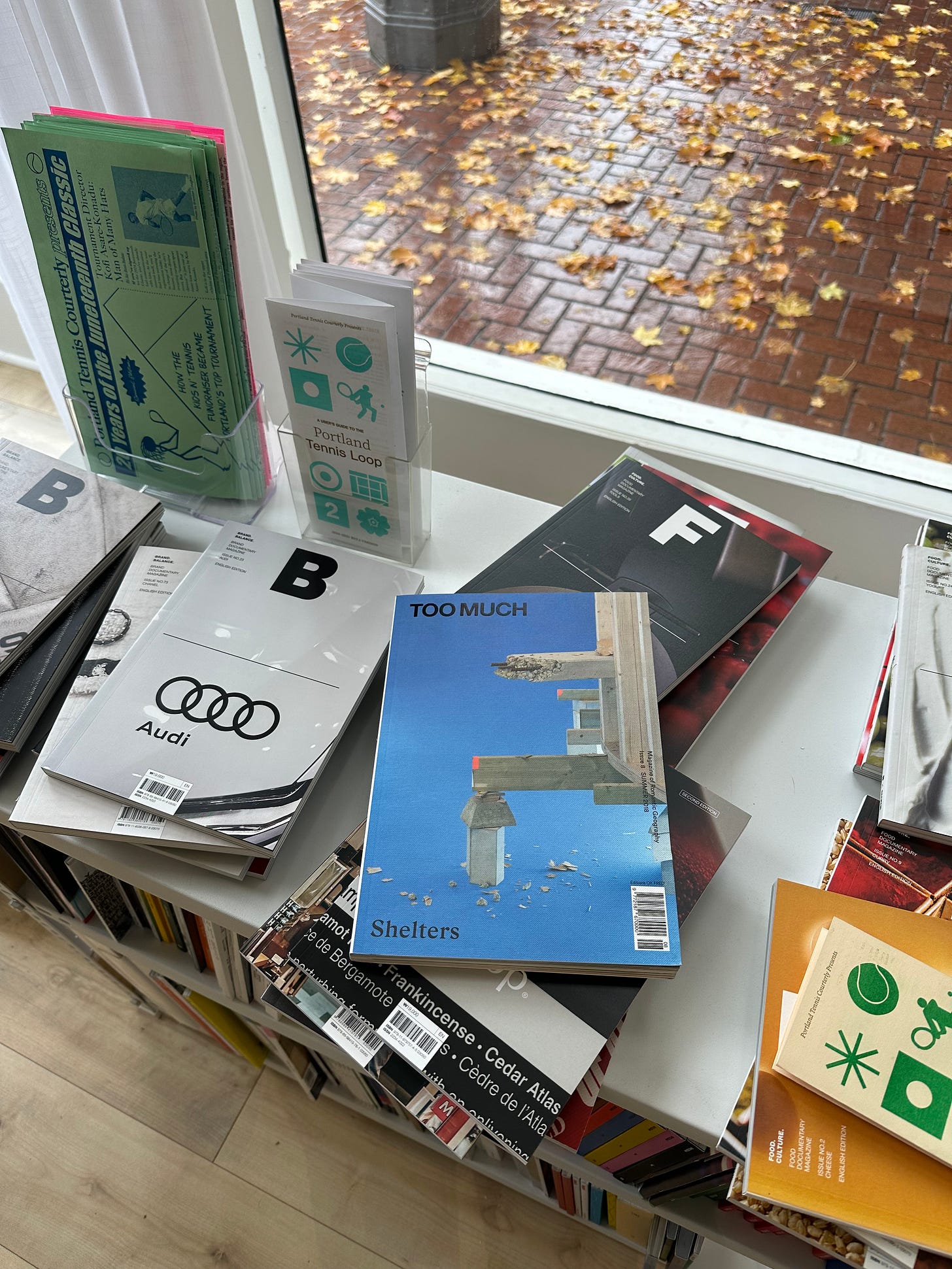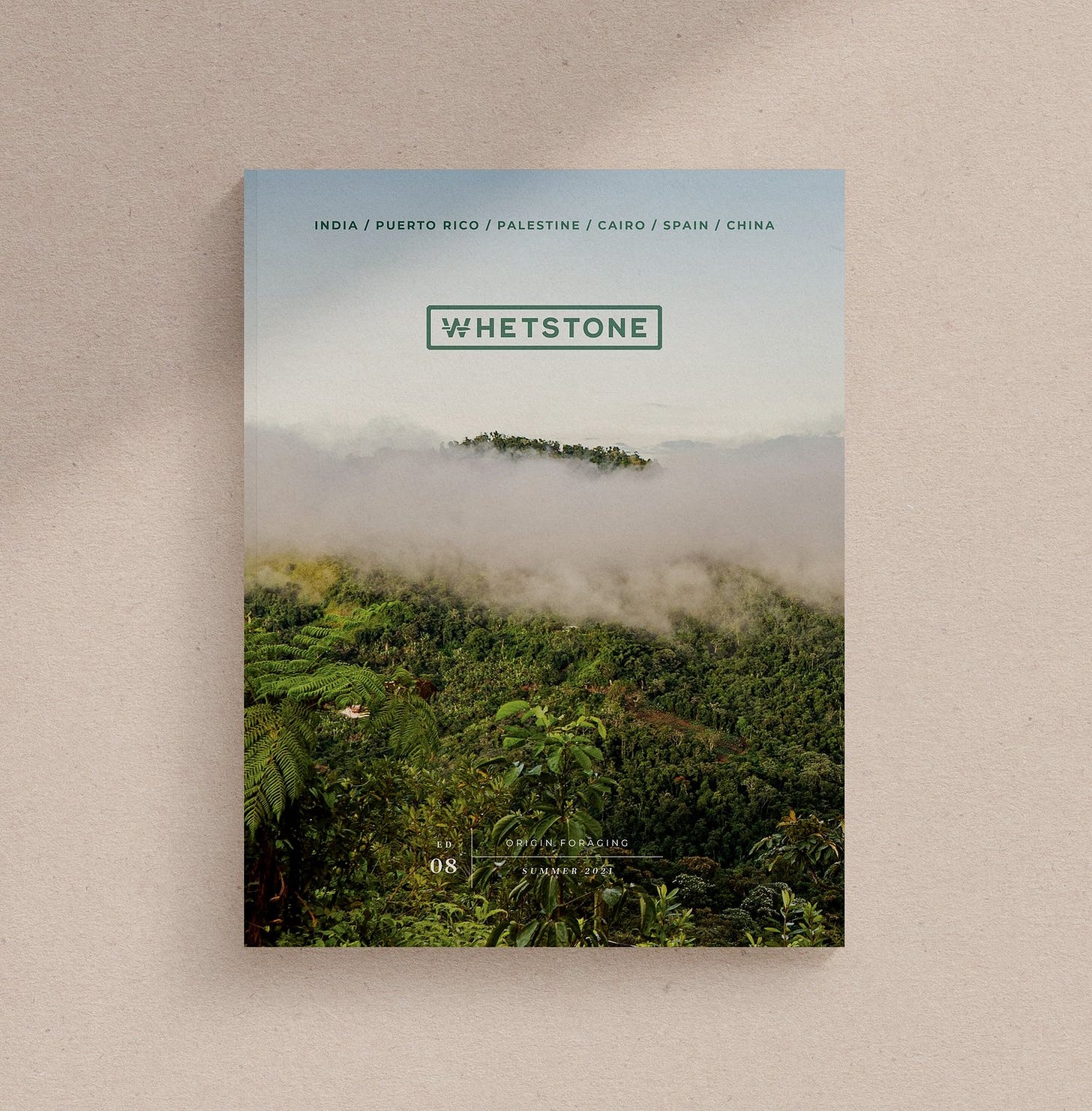Niche pubs I want to pitch
Plus some thoughts about the grim—and hopeful—state of print
This year so far, I’ve sent 111 pitches to either editors I’ve worked with or editors I’ve not yet worked with. Many of those pitches are the same story ideas, just repackaged to fit the specific publication. Like my sheep semen pitch. My goal for 2024 was (still is?) to broaden my bylines beyond outdoor and travel to verticals like food and environment and design. I’ve workshopped more pitches this year than in years prior, and I’m really proud of the research that’s gone into each idea. I think this year’s batch of pitches have been my strongest, most complex to date.
I wish I could tell you that my hard work has paid off. That I’ve had more reporting gigs than ever before! That my byline is in more magazines because of it! That I’ve had a record year of income! But I would be lying.
Of those 111 emails, a mere 15 pitches have been accepted and assigned, mostly from publications I already had a relationship with. One story was for Backpacker Magazine about the plan to improve the Oregon Coast Trail, another was for People For Bikes about Tennessee using cycling to support rural tourism. Both ran online only. I’ve gotten a few maybes and “pitch us again next spring” responses. But here’s the statistic that hurts most: 60 of my pitches, meticulously crafted and reviewed by friends, have received zero response. Which can only mean that the editor didn’t want the story and didn’t have the time to tell me so. Some ideas I’ve given up on, while others I’m holding onto. It’s so damn grim!
Maybe you’re thinking, Amelia, what if your ideas are just bad? And reader, I’ve had the same thought. Wouldn’t that be easier to accept? If I could be better at pitching, the outcome might be different. But I have improved and things have not gotten better. Sorry to say, but it’s not just me. My freelance friends are experiencing the same frustrations. We’re all hearing more rejections than acceptances and left in limbo by the ghosting. It’s not personal even though it feels personal. Media is just changing, and we have to keep trying.
Luckily there’s some hope! Bloomberg published a story in October about the print magazine revival. “Magazines aren’t dead, but they are, as Interview Editor-in-Chief Mel Ottenberg recently termed them in New York, ‘a luxury item,’” writes Amanda Mull. Buyers tend to be affluent and well-educated, collecting “things they think are fancy or high quality or sophisticated.” These people have the time and desire to read at leisure. The readers might even enjoy the ads paid for by luxury brands. Mull makes the case that “Magazines, of course, then have to make good on the promise to deliver something that will make you put down your phone, and they have to build up businesses around their print editions—events, merch, whatever—that justify the expense of producing them.”
That may be true of magazines like Kinfolk and Vogue and Architectural Digest. But I think that there’s another driver behind the print revival that the Bloomberg piece didn’t explore. And it’s something I’ve been thinking about since visiting a new magazine shop called CHESS CLUB on NW 6th Street in Portland. The walls are lined with indie magazines you’ve never heard of. Co-owner Andrew is extremely passionate and knowledgable about print. He’ll tell you about all his recent discoveries, like a magazine from Ukraine started by students or a Korean magazine with editions dedicated to a single ingredient like yogurt. I’ll be visiting often to find new magazines to collect and inspiration for pitching.
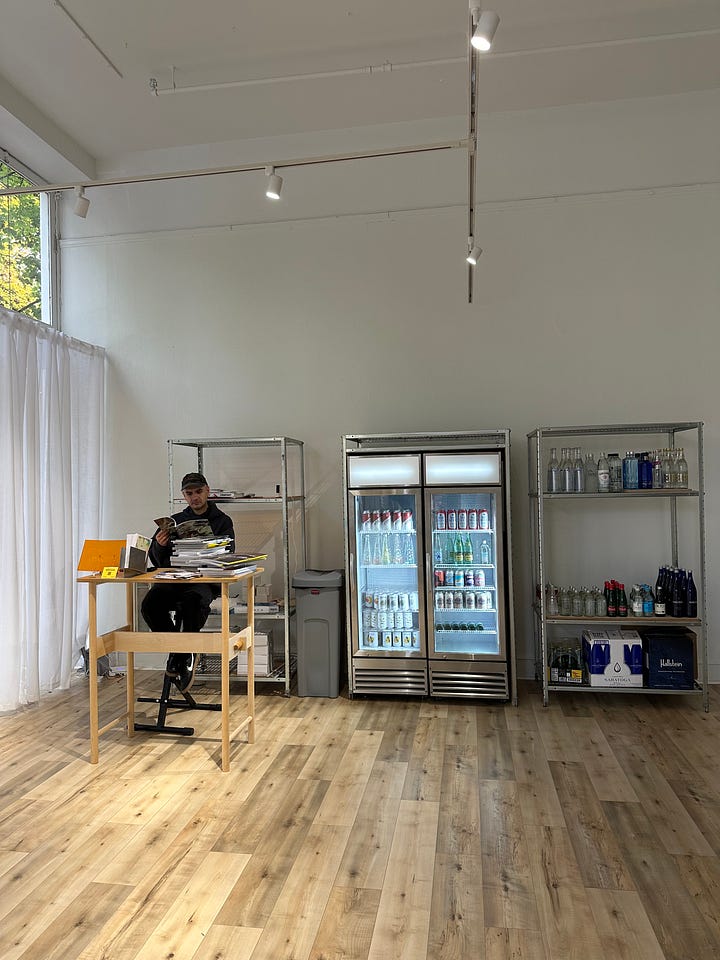
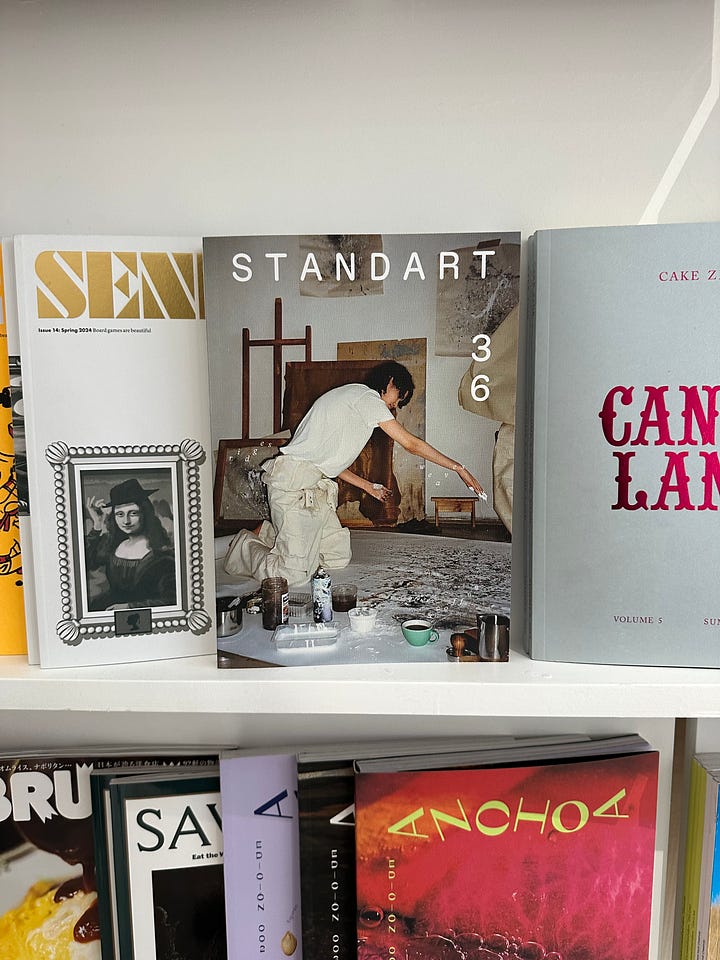
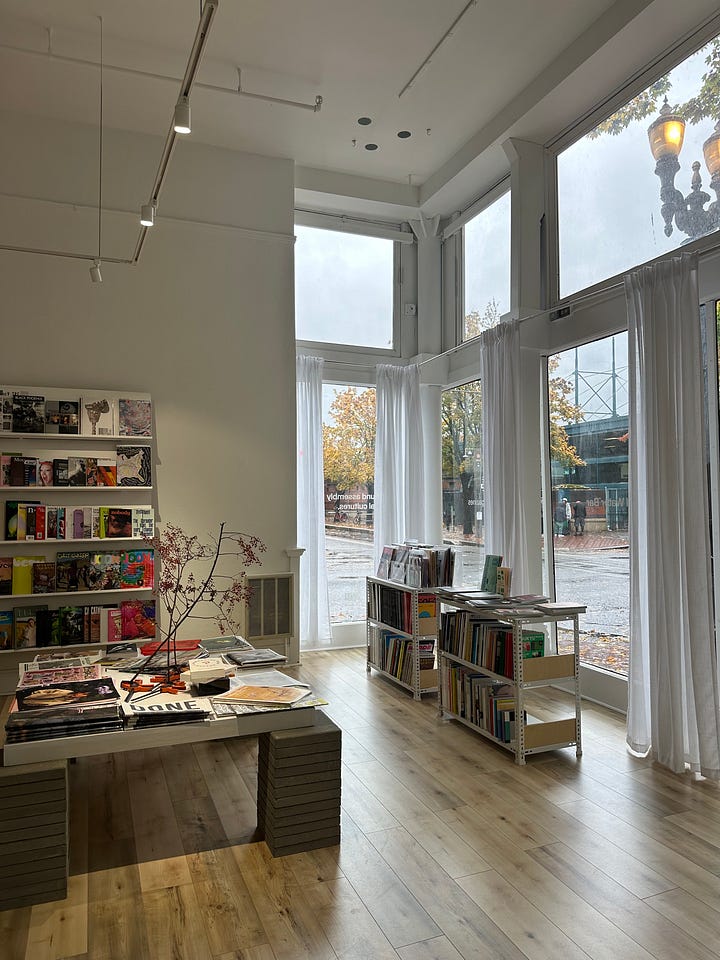
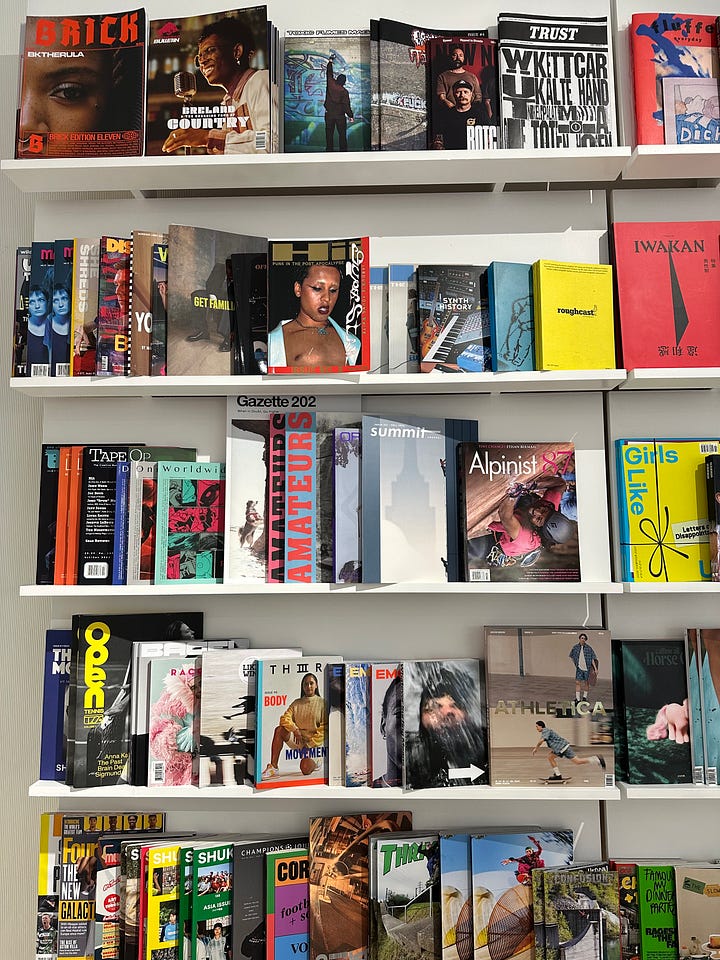
What if print is making a comeback not because affluent people want to signal their wealth but because more people are interested in physically engaging with art? Art as words, art as design, art as photography, art as paper texture. If we’re conscientious that we’re going to waste time scrolling anyway, can we rewire our brains to pick up a magazine instead? In order to pick one up there must be one nearby. So we start collecting them. And they must be beautiful because they cost $25 each. We start arranging our collections on our walls and bookshelves and coffee tables, perhaps as a display of our interests but also to redirect our attention away from the screen. Another reason they must be beautiful. Look at me, touch me, indulge in me. Instead of bringing our phones to the toilet, we bring a magazine. Instead of impulse shopping on our phones at night, we read a magazine. Instead of scrolling at the coffee shop while we wait for a friend, we flip through a magazine. What if, in order to slow down time, all we need to do is pick up a magazine? We read one story at a time, when we have the time. And more often, we will make time. Because it feels good to learn and absorb at our own pace. Because it feels good to drop into a story, another world. Because it feels good to be visually and intellectually stimulated by something tangible. The love, the two-way relationship with print, is real. Give and you shall receive.
If you’re in Portland and interested in pitching 100 ideas and only hearing back about a few lol, I’m speaking on a panel called “The Art of Pitching Magazines” at CHESS CLUB at 3 p.m. Nov. 17. Other speakers include , , and Saeed Rahbaran, and moderator Anja Charbonneau. Hope to see you there!
11 niche pubs I want to pitch
Whetstone
About: “Since 2016 Whetstone has used food as a means of better understanding humans and the world. To date, we’ve worked with a team of global creatives representing over 80 countries. We believe that diversity isn’t just noteworthy, it’s what makes our work so essential.”
How to pitch: “Got a story on food origins? We'd love to hear ideas that take an anthropological approach to what's eaten where, and why. If you are interested in providing photography as well, be sure to include a link for us to see your work. Please contact us at EDITOR@WHETSTONEMEDIA.COM.”


